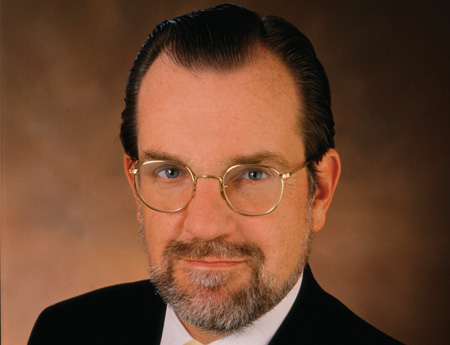CBS’ Poltrack Sees Slow TV Ad Growth

David Poltrack, the usually bullish chief research officer at CBS, says he’s expecting TV ad revenues to be flat for the first half of 2015.
Poltrack, speaking at UBS’ 42nd Annual Global Media and Communications Conference Monday, also said that while Netflix is a big factor in lower ratings for traditional TV, selling programs to the streaming video-on-demand services is still good business.
He added that while more advertisers appear to be shifting ad dollars to digital from television, it’s not a good idea because it doesn’t result in greater campaign reach or bigger increases in sales.
Poltrack conceded that the upbeat forecast for broadcast ad spending a year ago was off the mark by a wide margin.
“The advertising market never gained any momentum in 2014,” Poltrack said.
For 2015, Poltrack said the economy appears to be getting better, but that won’t necessarily quickly lead to increased ad spending. He said that the first half, he expected ad spending to be flat, with the possibility of 2% growth in the second half. That would mean that for the full year, ad spending would be down 1% from 2014, an Olympics and election year. Excluding those big event, underlying growth would be up 1% for the year.
Poltrack added that he sees the broadcast networks adding to their share of ad dollars versus cable, finishing 2015 with an underlying growth rate of 2%.
Broadcasting & Cable Newsletter
The smarter way to stay on top of broadcasting and cable industry. Sign up below
“If the ad market catches up with the economy, growth could be faster. But there are no signs of that happening yet, hence my conservative forecast,” Poltrack said.
In his talk, Poltrack also looked at longer term factors affecting the TV business, most notably the 2% lower level of households using TV as measured by Nielsen.
Poltrack attributed 56% of the drop to Netflix homes replacing measured viewing with unmeasured streaming. He said 18% of the drop comes from new broadband only homes being added to the Nielsen sample. Another 18% is the result of an increasing number of homes with Netflix and 5% coming from homes downgrading their service from cable to broadcast only.
Poltrack said that in Netflix homes, people are not only streaming Netflix programming—original and otherwise—but are also streaming more content in ways that don’t get included in Nielsen ratings.
“Viewers are turning to streaming instead of the DVR to catch up on favorite programs,” Poltrack said. He added that when CBS shows get streamed, they include commercials that command premium rates from advertisers.
Poltrack said that while Netflix has become a competitor for viewers, it is still good business for CBS to sell its programming to the streaming service. “The answer is simple. We make more money,” he said.
He noted that it’s been more than a year since it premiered any hit programming—Orange Is the New Black and House of Cards—which means “they do not appear to have fond any magic formula for success.”
He added that Netflix, like other forms of syndication, can help build the audience for long-running shows and the fees CBS gets from Netflix supports the development of new programming.
“You’d prefer [Netflix viewers] watch only episodes of your shows to new episodes of someone else. They’re a valued partner as well as a competitor,” Poltrack said.
VOD is also boosting viewing of CBS shows and CBS plans a test with Comcast of On Demand Commercial Ratings with Madam Secretary next month. The test puts the current week’s commercials in all episodes of the series viewed on demand. CBS says that concerns that binge viewing could create high levels of frequency are unfounded because 83% of VOD viewers watch only one episode in a given week.
Poltrack also confirmed that media dollars are moving from television to digital. “The short answer is yes. Should they be? The short answer is no,” he said.
Poltrack said advertisers are shifting dollars to digital because they think they can’t achieve broad reach with TV’s lower ratings and that digital advertising costs less.
But Poltrack said the lower reach for ad campaign is mainly the result of marketers shifting spending from broadcast to low cost cable programming.
“The fact is that more primetime broadcast will increase weekly reach and eliminate waste and increase ROI,” he said.
Jon has been business editor of Broadcasting+Cable since 2010. He focuses on revenue-generating activities, including advertising and distribution, as well as executive intrigue and merger and acquisition activity. Just about any story is fair game, if a dollar sign can make its way into the article. Before B+C, Jon covered the industry for TVWeek, Cable World, Electronic Media, Advertising Age and The New York Post. A native New Yorker, Jon is hiding in plain sight in the suburbs of Chicago.

